Enjoy this slide show journey from the OWC kenya trip in 2017!
Hover over the picture for details about its content.

The Open World Cause met Livingstone Kegode via Skype during the spring of 2015. A partnership between The Open World Cause and Livingstone's school, HIP Africa soon developed via the use of Skype and other video-chat applications.

Sue was one of the original partners of Livingstone when he founded HIP Africa. Sue worked tirelessly as a consultant, and in 2016 it was estimated that her donations and the partners that she recruited made up 1/3 of the donations to HIP Africa. When Kenya's zoning standards changed, Sue started Friends Helping Friends Project to encourage schools in the US to get involved and help HIP, and served as an advisory for the Kenya Help effort in 2017.

During the fall of 2016, Ben Honeycutt challenged his 6th grade technology students to create a legacy. Two students, Amelia and Christina, stepped up to the plate to help HIP Africa after finding out that the school could close due to Kenya's new zoning standards if $16,000 wasn't raised before the end of 2017. Together, these girls created a shoe campaign that involved elementary classrooms, middle school classrooms, and their surrounding community. Together they raised over 1,000 pairs of shoes that went to Funds to Orgs, an organization that donates shoes to local homeless shelters and gives cash per pound of shoes. Check out their full story here: https://www.youtube.com/watch?v=ORuzrL_GzxA&list=PLag6lWn_9aIqYscnkQd_FsJEJEBzdJaAA&index=1

The OWC was fortunate enough to have Garrett and Nick visit HIP Africa in January of 2017. There, they met the students, students, administrators, and members of the community. They also did some preliminary field work that allowed the OWC to begin planning for their trip during the summer of 2017. Garrett and Nick were instrumental in laying the groundwork for the OWC trip's success.

The OWC brought charging cables, iPads and a MacBook to HIP for the students and teachers to use. While in Kenya, the OWC team led professional development sessions for teachers, and also had the community out one night to look at the stars using Skyview on the iPads.

Professor Melissa Collum was the fearless leader of the OWC trip. Ben met Melissa in New Orleans at NCSS in November of 2015. She is a professor of social studies at Viteterbo, lived in Kenya for 3 years, and did genocidal testimonies for the United Nations after the Rwandan Genocide.

We wanted to take a quick second to say a huge thank you to Matt Janzen, as well as to all of the other people who helped out our team members with travel. We met John and Hunter in Amsterdam and the rest of our team in Kenya. We had surprisingly good food during our two international flights and were able to bounce ideas off of each other during the travel.

After two years of working with him virtually. meeting Livingstone in person in Nairobi was a dream come true. For many of us on this trip, the first night in Nairobi was our first time meeting each other in person. We spent time talking and getting to know each other, and this was the beginning of a wonderful trip.

When traveling to other countries, the technology that you are used to using does not always work the same way. In order for American phones to work, you have to replace the SIM card, and you even have to do prove your identity to log into social media accounts.

After a quick breakfast of local fruit, we got into a van to begin making our way towards Kimilili.

For many of our OWC trip members, this was the first time in a developing country. A resounding theme of our first day of travel was not how different everything felt, but how we could find similarity in our surroundings -- the trees, the animals, the mountains, even some of the buildings looked like they could have been from the United States.

On the left, we have a picture that resembles Pringles. This picture was taken at a grocery store in Nairobi before hitting the road. On the right was a lunch that we had on at a restaurant along the road. We had rice, chicken vegetables, and a gravy.

The trip from Nairobi to our final destination of Kimilili had us crossing the equator. This group picture was taken by our amazing van driver during our stop there.

In order to avoid driving at night in Kenya, we ended up spending the night in Eldoret at a beautiful hotel. About half of our group stayed behind during the evening, while the others in the group went into the city.

While half the group stayed back at the hotel, the other half went out into Eldoret to get things set-up for our stay in Kimilili. Beds were purchased and set to be delivered, and buckets for water filters were also purchased.

We woke up early in Eldoret to be at HIP Africa for morning announcements. These were some of the sights that we saw during that drive. We had beautiful sunrises and blue skies over green fields.

As we entered the town of Kimilili, Professor Melissa Collum began assigning the OWC team tasks for the day as well as the duration of the week. While driving, we passed next to one of HIP Africa's beloved teachers walking with a student. We made room for the teacher in the van to give her a ride, and the lucky student got to sit on Connor's lap.

After we arrived at HIP, Freddy, Livingstone's brother, had the students line up so that we could introduce ourselves. The stars of the show that morning were Ben and Melissa, with the initial introductions, although the students were definitely curious by the rest of the group as well.

After the introductions, the students put up the Kenyan flag for the day, and then lined up to greet us. We got down so that we would be closer to their level and shook every students hands.

During morning recess, some of the students went off to the soccer pitch to play, while others decided to teach Brook and Natalie how to play the game, "I Lost a Letter", which is very similar to the American game, "Duck, duck, goose".

Natalie was chosen by the kids during the game to run and "catch the letter". The kids would cheer for the people running. The OWC team quickly became a favorite of theirs, along with the teachers, to play with.

On one of the outside walls of the school was this painted sign with "HIP" written on it as well as a school motto: "Care. Create. Connect". Both were starting to fade from time and weather.

Inside a classroom was this poster that was given to HIP from a partner classroom from Georgia!

Because of the sometimes inconsistent electricity, this is a solar panel that HIP uses to charge their electronic devices--things like phones, laptops, and iPads. The technology plugs into it, while it would rest on the metal roof of the school.

A student is seated at a desk that the OWC helped purchase during a fundraising event a few years prior. He was enjoying a lesson in math taught by one of HIP's wonderful teachers.

This is an example of some of the supplies that were in the classrooms at HIP. The chalk boards were generally made of a black paint. As the boards got used, the towels they used to wipe the board did not always remove all the chalk dust, and holes began forming in some of the boards. In some of the classrooms, about half of the board was no longer able to be used because of the amount of holes. The hole pictured was about 2 inches wide, causing the teachers to need to use the board around it. In the picture on the top left is one of the larger student pencils that was being used.

One of Connor's first tasks was to evaluate the structural foundations of the existing buildings. He discovered a few things. The first was that there was a drainage ditch that was starting to form in front of the school which caused the kids to have to jump to avoid getting muddy feet. The other major discovery was that the latrine had been built on a hill and was on the verge of collapse. The other issues with the latrine were that the girls bathroom had mud floors and no steps to stand on while using the latrine, and no working lock to keep the door locked.

Not all of the students at HIP were able to afford shoes. This became especially dangerous given the conditions in the latrine. Students without shoes still needed to use the latrine and would have to go in without shoes, even when there was urine on the floor.

The kindergarten room, as well as the other classrooms, did not have consistent electricity. Each window did have windows, but during the rainy season, it was important to keep the windows closed in order to keep the rain out. This made the classrooms especially dark during storms.

This picture was taken from outside the 3rd grade classroom through the window. From this view, you can see how many students needed to fit at each table, and how little room there was for the students and teachers to be able to move around the room -- both things that are helpful in learning. Despite these challenges, the students were remarkably excited and engaged while learning!

During the afternoon of our first day at HIP, the school set up an assembly for the parents so that we could explain what our mission was going to be over the next few days in the community.

Hunter, as a high school student, joined the OWC on our trip to Kenya as our official documentation expert. He took the grand majority of the pictures from the trip and also captured a large amount of video footage.

During afternoon recess, our nurse, Brooke, checks in on a student who wasn't feeling well. She sat him in the shade and got him water. He was ready to class after recess!

Here, John and Connor, an American Architect, meets with Albert, a local architect. Together, they talked about the structural integrity of the buildings and brainstormed ideas for ways to fortify the current latrine while also making plans for a new latrine that includes a sanitation station.

John brought his 360 camera with him and was able to capture several incredible images. These images have been used in professional development sessions in the US and have also been used for A Day in the Life, a lesson plan published on Microsoft in Education's website. Specifically, this image was captured to show the size of a classroom.

At the beginning of every day, the Kenyan flag would be raised, and at the end of the day, the Kenyan flag would be lowered. John brought with him a carabiner that they rigged to the flag pole to make it easier for HIP's students to be able to raise and lower it every day.

Natalie worked as a an observer and took meticulous notes. She observed teachers and asked them follow up questions about pedagogy, acted as a big student to observe how the students responded and learned content, and played with the kids at recess. Some of the things Natalie was extremely happy to report included: the teachers genuinely loving and caring for the students, no gender bias when calling on students, and overall, pretty good student engagement!

Ben did many tasks throughout the trip. One of his favorite task was, of course, working with kids. He helped teach lessons and worked 1 on 1 with kids struggling with different content materials to help them achieve.

Ben's other major role was to function as Melissa's scribe. Ben could generally be found with his laptop following Professor Melissa Collum around. Melissa, having lived in Eldoret for a few years, was generally aware of the culture and customs and was quickly welcomed and accepted by many in the community. She interviewed students, parents, teachers, and members of the administration in an effort to best serve HIP Academy.

After a wonderful first day at HIP, the OWC team heads back to Livingstone's parents house who were kind enough to offer lodging.

Curious students from the school across the street wanted to see what the HIP team was all about. They came over after our first day of school as we were walking back to Bapa's house, so we showed them some of our camera equipment. They loved being able to take pictures and see them right away.

After dropping our gear off at Bapa's house, he wanted to lead us on a walk. We followed a dirt path near the house and began walking. The path began fairly wide and young kids from the school across the road began following us. They were enjoying observing us while eating sugar cane. Eventually, the path narrowed and we walked in a single file behind Bapa. Natalie brought up the tail end of the group and the children continued to follow us. This was the path that they took home every day!

The turnaround point of our walk was marked by this bridge. While the OWC team stepped aside to assess the structural integrity of the bridge, the students who had been following us began walking across. You could tell that those kids were used to the walk and the bridge and proceeded with confidence. Despite a fairly quickly moving river and rusty metal, that was the only option for the students if they wanted to attend school.

Bapa was next to cross after the children. He coached us on the safest way to cross (staying balanced and only walking where pipes were directly beneath the metal sheets). Seeing Bapa cross inspired confidence in all of us and we all took turns crossing. Some of us were significantly more scared than others, but we all felt like we had managed to accomplish something incredible that is so unique to this community.

This was the amazing place that we stayed at while in Kimilili. Bapa built this chambre specifically for us so that we would have a place to stay while visiting the school.

This was a quick snapshot from the first day in Kimilili of the inside of the chambre. To Natalie's right was the room that the girls stayed in, and to the left was the boys. The room that Natalie is in was the "living room" where the Open World team was able to socialize and eat when not in the main Kegode home.

Mama and Livingstone's sister, Ester were incredibly kind and welcoming to the Open World team. They were the go-to people for the team during our stay when we had any questions whatsoever. This was our first interaction with them.

Bapa was another extraordinary member of the Kegode family. Bapa built the chambre that the Open World team stayed in because he wanted to make sure that we were comfortable during our stay. Many evenings we spent with him discussing the days events and getting to know each other.

Mama was one of the most amazing cooks that we have ever come across. Even today, we are missing her cooking. This was one of the staples that we had while in Kenya, and it never got old. This dish had rice, beans, potatoes, and meat.

This was our first meeting after a day of school. Every evening, the Open World team would get together and talk about our observations from the day. We would celebrate the good and discuss the issues that we saw and work on potential solutions.

This sunset was from our first night in Kimilili, Kenya. You can see a few different staples from the community including a soccer goal post and corn growing in the fields. Several members of the community would play soccer in the evenings, and most also happened to grow corn in their fields.

Some members of the community owned carts that their mules would pull around. Some of HIPs students would be brought to school in one while their parents were on their way to work.

At least once a day while the students were at recess, some of the teachers would sit together and have chai. This was a way for the teachers to sit together, talk, and relax. The OWC team loved this part of the day because we were able to get to know the teachers well on a personal level.

Brooke examined all of the children at HIP with the help of Hunter. In the top right picture, you can see a student being told how the medical exams worked. Part of the exam included an eye test and measuring height to check for stunted growth. Hunter would record Brooke's findings in either writing or through photos.

Part of the eye exam included looking into the eyes to check for abnormalities. Fortunately, this student had eyes that looked great!
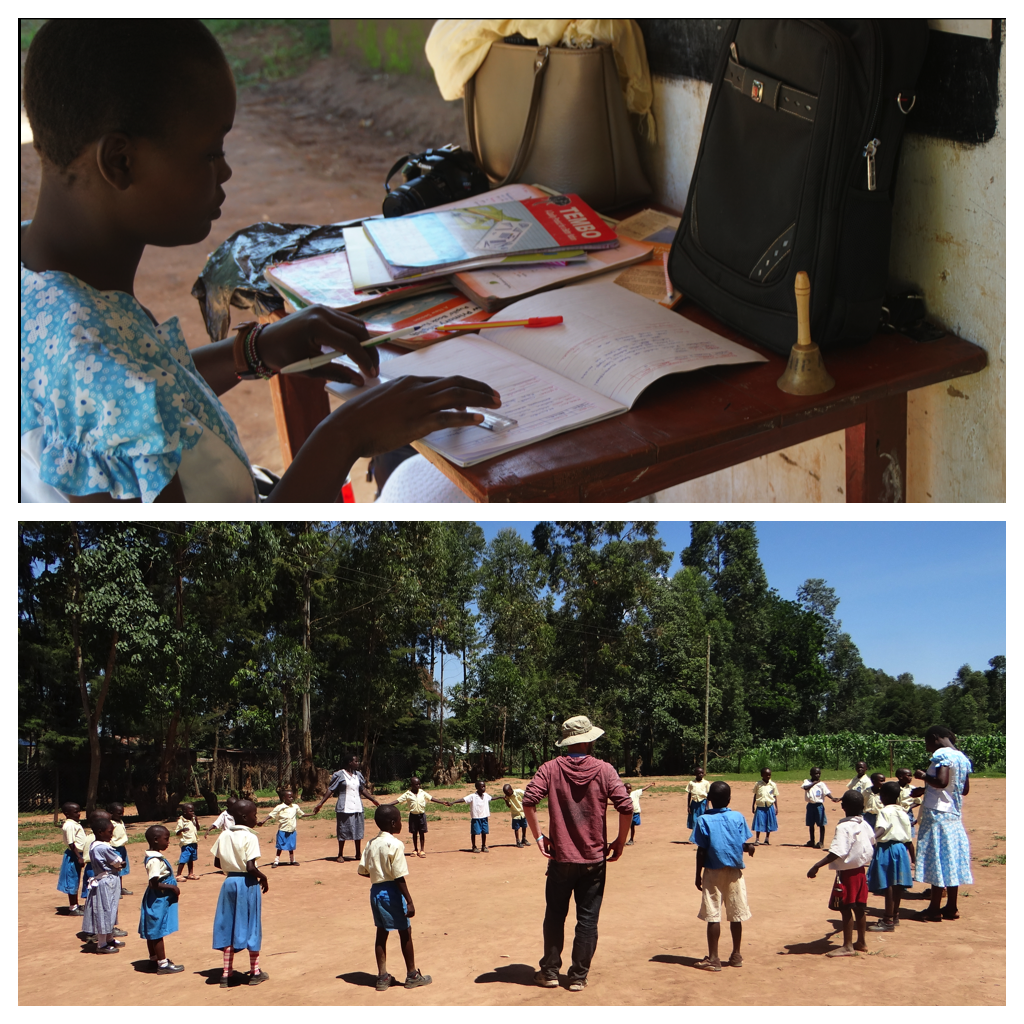
Throughout the first two days, the educators on the trip observed the process of Kenya's administrators and classroom instructors. That included viewing teachers lesson plans and classroom work, but also allowed us to play outdoor learning games with the students!

One issue we observed was the lack of ventilation in the cooking area. The smoke made it hard for the cook at times when meal prepping.
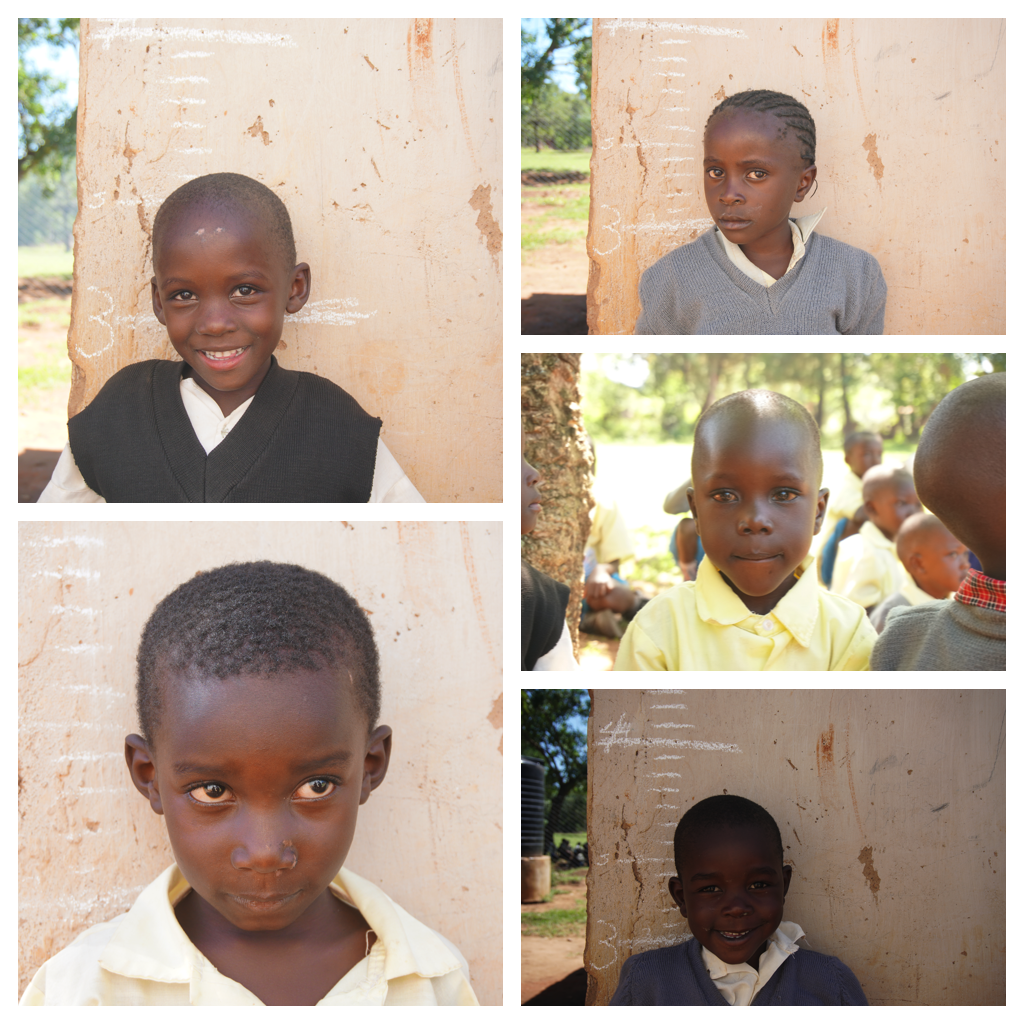
After their exams, students took individual pictures with Brooke and Hunter. These pictures also allowed us to compare their average heights with the average heights of students from Kenya.

A student takes a deep breath as Brooke checks his breathing.

Inside mama and bapa's living room.
This is where the OWC team ate most of our meals. The table nearest John and bapa would have the servings and we would serve ourselves buffet style.
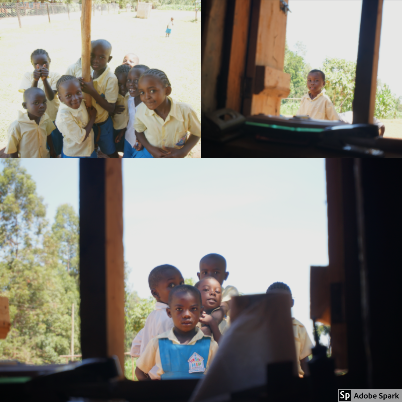
The HIP students loved taking pictures. Any time a camera was out, they would gather to get in the shot.

The students learned that our phones had selfie capabilities. This was right after they figured out how to unlock our phones and get the camera app going.

The back row of students is working diligently on work while the front row looks at the teacher. Maddox was focused on the camera.

Natalie showed the students a picture of her dog, Cooper. HIP's students had never seen such a small dog so they thought it was a "Paka" or "cat".

Ben saying something silly to the boys. The boys loved gathering around him and listening to him joke with them.

These four boys were great friends. They loved hanging out on the pitch together and making silly faces for pictures.

One of HIP's amazing teachers, Jobe, shows his class something while they take a break and go outside.
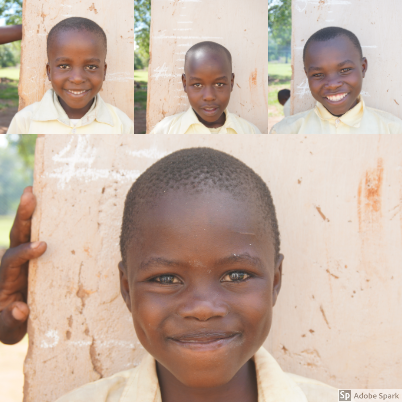
Brooke measured students while Hunter took pictures for records. One of our goals was to track student growth. We used chalk on the side of the building and measured the height of each student.

This class was doing a subtraction lesson where they were subtracting 2 digit numerals from each other. The chalkboard was black paint on a wall that had many holes in it. The teachers would write their lessons around the holes for the students.

One of HIP's students coming out of the latrine. This boy did not have a pair of shoes for school.
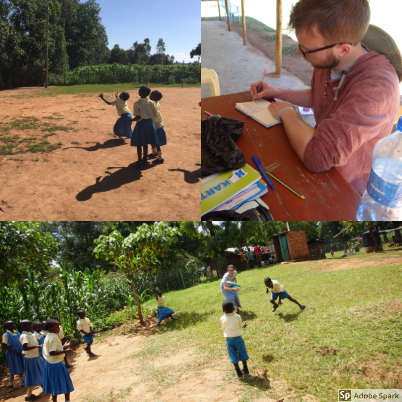
Recess was always a lot of fun. The kids would play a variety of games. In the top left, the students were trying to play a game of catch. On the bottom, the students were learning how to catch and throw a Frisbee with Brooke. On occasion, the OWC team would take a break and journal/document the events that had taken place so far in the day.

After a day at the school, the OWC team would walk back to the chambre. There, we would regroup, discuss the day, and if you were Hunter, you would lay in the sun.

Because Kimilili is so far away from major cities, there is little to no light pollution. The stars in the sky every night would incredibly visible and vibrant.
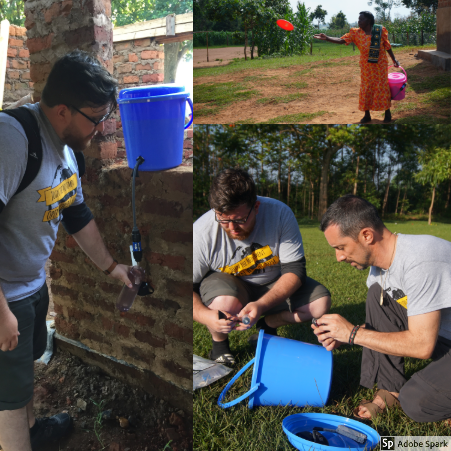
Connor and John were our water gurus. John cut holes in all the buckets while Connor helped install the water filters for the members of the community. On the top right, we have the matron of a family that attends the school carrying her new water filter and trying to throw a bucket.
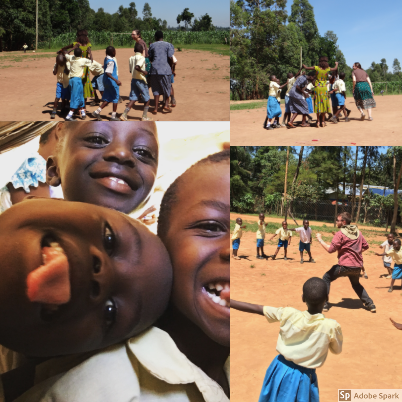
More shenanigans during recess. The top two pictures show a group of students playing, "I lost a letter" which is very similar to "Duck, Duck, Goose". On the bottom right, Ben shows students how to dance the Hokey Pokey. On the left, we have students playing with a phone and taking selfies.

The Frisbees were a huge hit. Many of the students had never seen one before. Along with the fun of throwing them, some students found enjoyment by balancing them on their heads.

Brooke checks the ears of one of HIP's students. The otoscope was cold and the student wasn't sure what to make of it being in his ear.
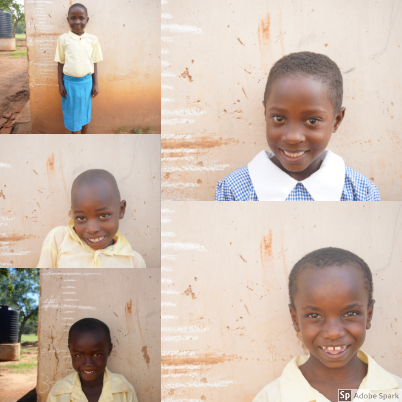
This series of student pictures were taken during day 2 of Brooke's health evaluations. Again, we had students line up against the wall to measure their height.

During recess, some of the kids wanted to stand next to each other and compare their height.

After recess, but before the teacher began her lesson, these three students took a quick second to try to make silly faces for the camera.

The OWC team had many meetings with Livingstone and community members throughout the week that we were in Kimilili. Melissa generally conducted the meetings while Ben took detailed notes.

Ben, Connor, and Melissa talked strategy about the school building that OWC helped fund. Connor worked with a local architect to put the building plan on paper. One of the best experiences for Connor was working with local architects because they knew the materials that they were working with better than anyone. The collaboration that came from them lead to a beautiful new school being built.

While the boys were generally the first ones to pose with their friends for the camera, some of HIP's girls started getting less camera shy as they grew more used to the OWC team.
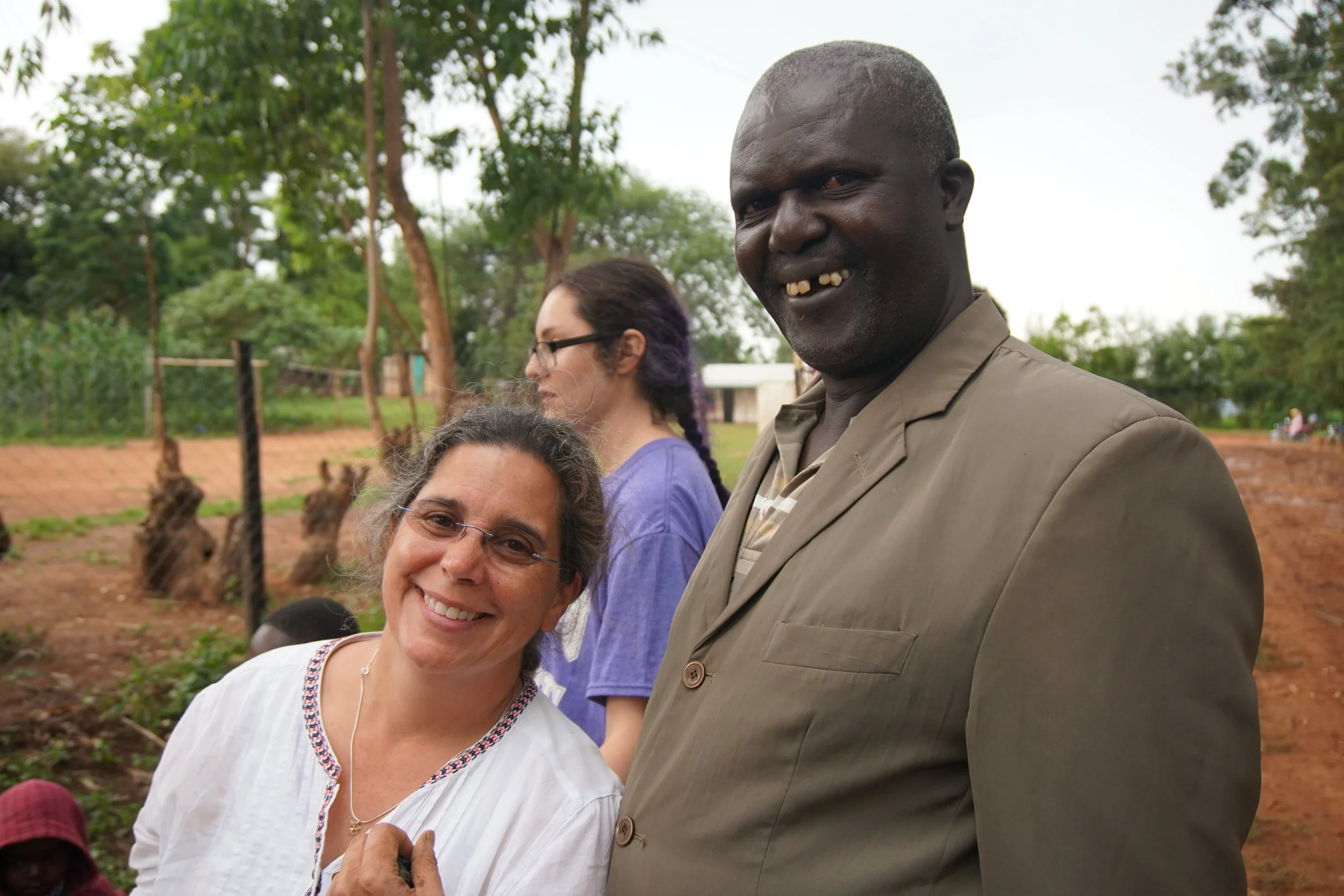
Melissa posing with Bapa right outside the school grounds. The land HIP is on is owned by Bapa, so naturally Melissa wanted to include him in on the plans that had been made earlier in the day by Connor and the local architect.

One of the biggest parent concerns was over the state of the girls latrine and the fact that the latrine was built on a hill. There were concerns that the latrine would not last much longer. Again, Connor worked with a local builder to create a plan to reinforce the current latrine, get a lock on the girl's side, and put concrete on the floor for the girls. Bapa wanted to ensure that the work was done well, so he showed up in a suit jacket with a chair and observed the amazing work that was being done.
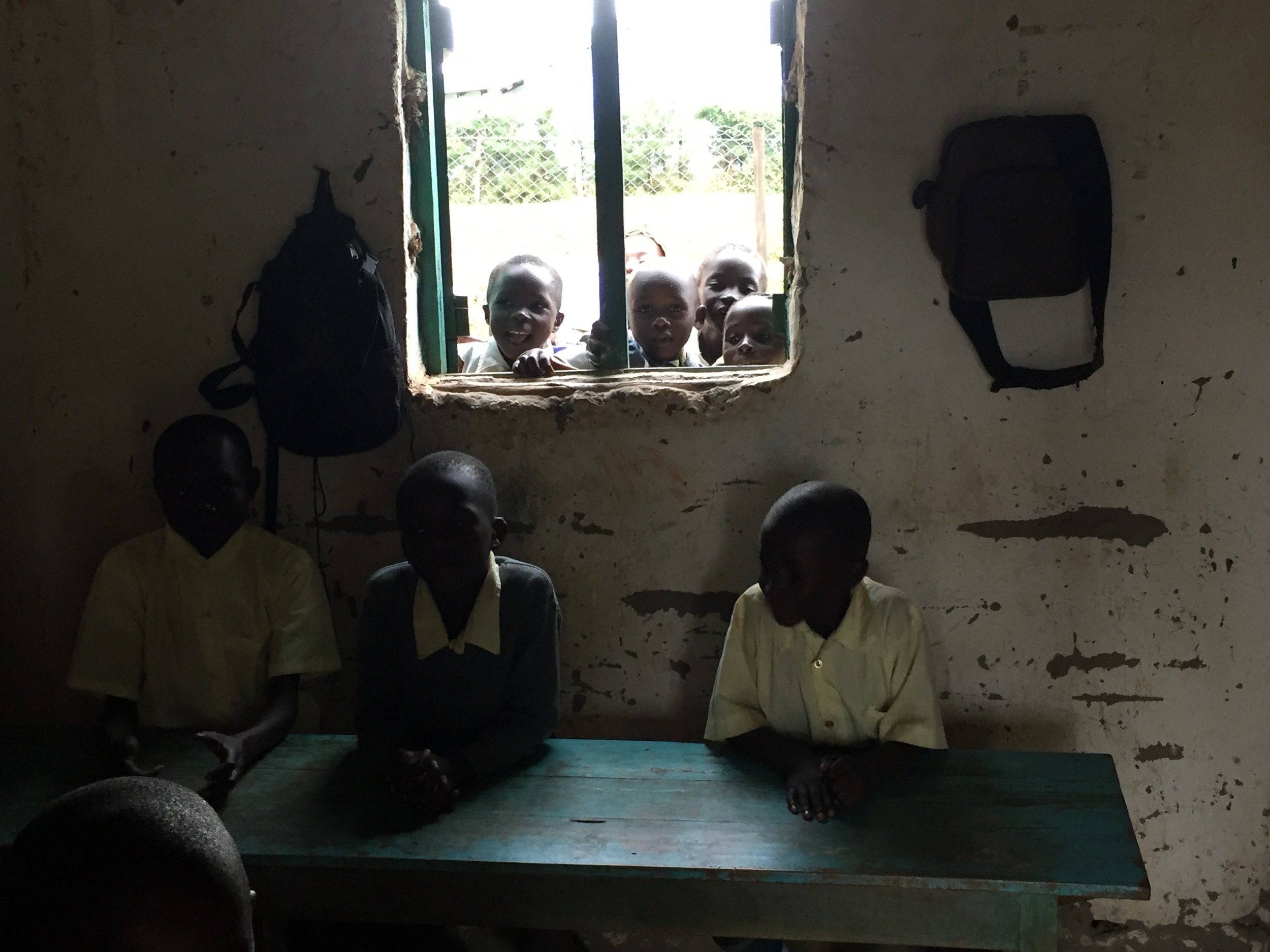
The classrooms were pretty small and had a single window. When the teacher wasn't instructing, students liked to gather in the windows to talk to their classmates in the rooms.
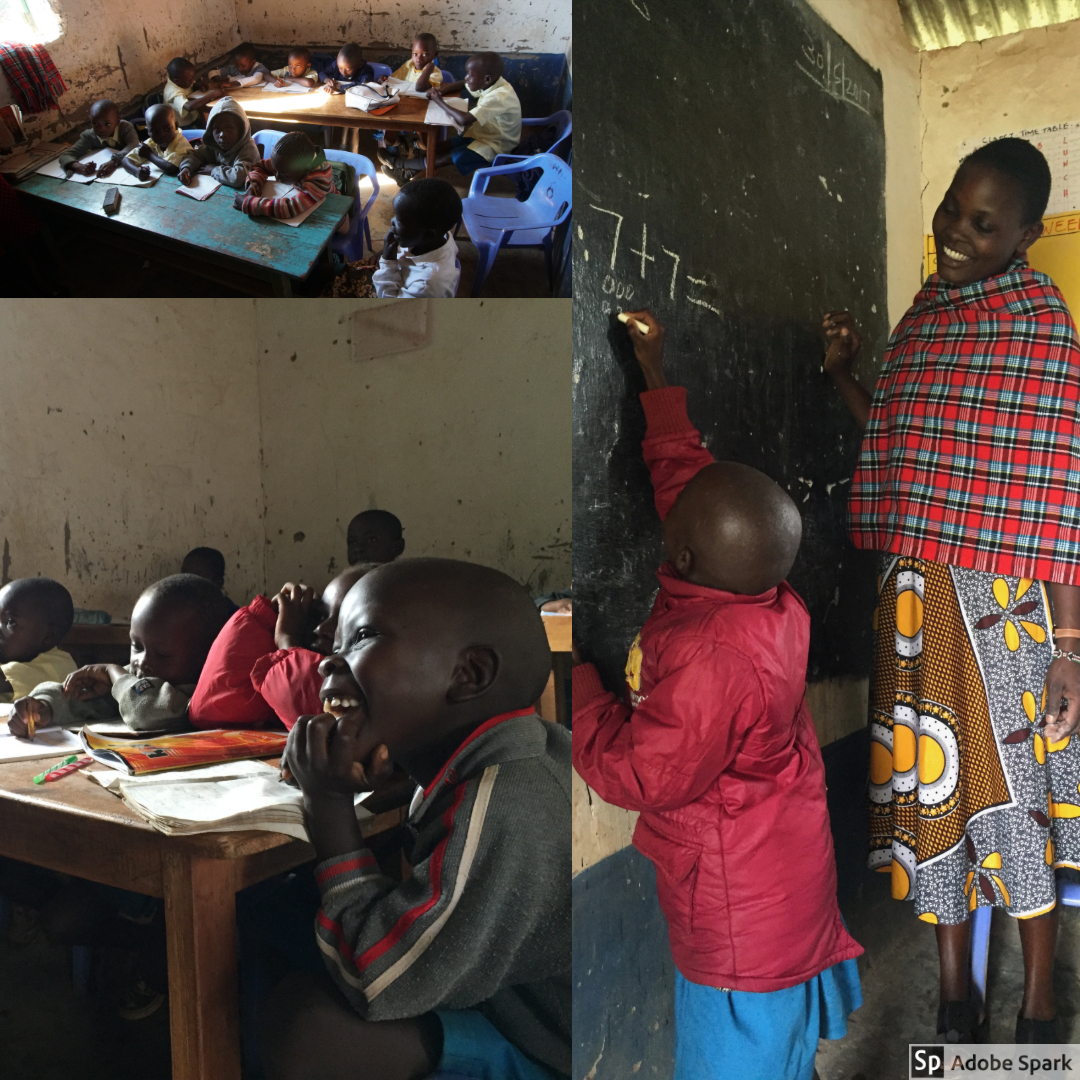
While the OWC team was in Kenya, they were in the middle of their winter. While we were generally still pretty warm, the students were cold. They would do their lessons with shawls or jackets to keep warm.

Brooke very quickly became a celebrity among the students because of her Simba tattoo. All the students at HIP had the chance to touch it. Some students even tried to rub it off.
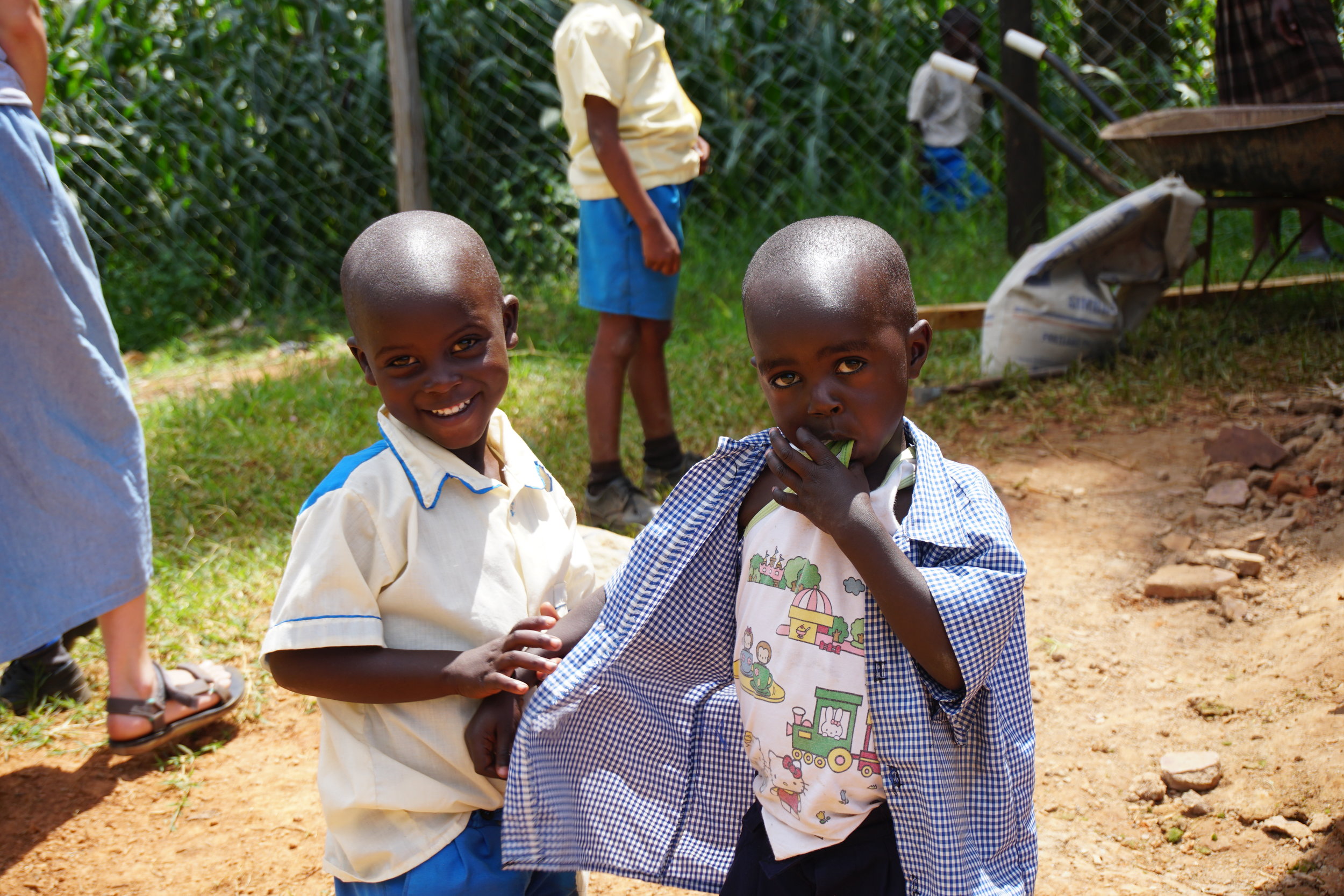
These two boys were from HIP's youngest grade. The students were still getting used to wearing the school uniforms.

One of the gifts the OWC team brought the students was a kid to help with oral hygiene. We showed the students how to brush their teeth and gave them each a toothbrush and toothpaste.
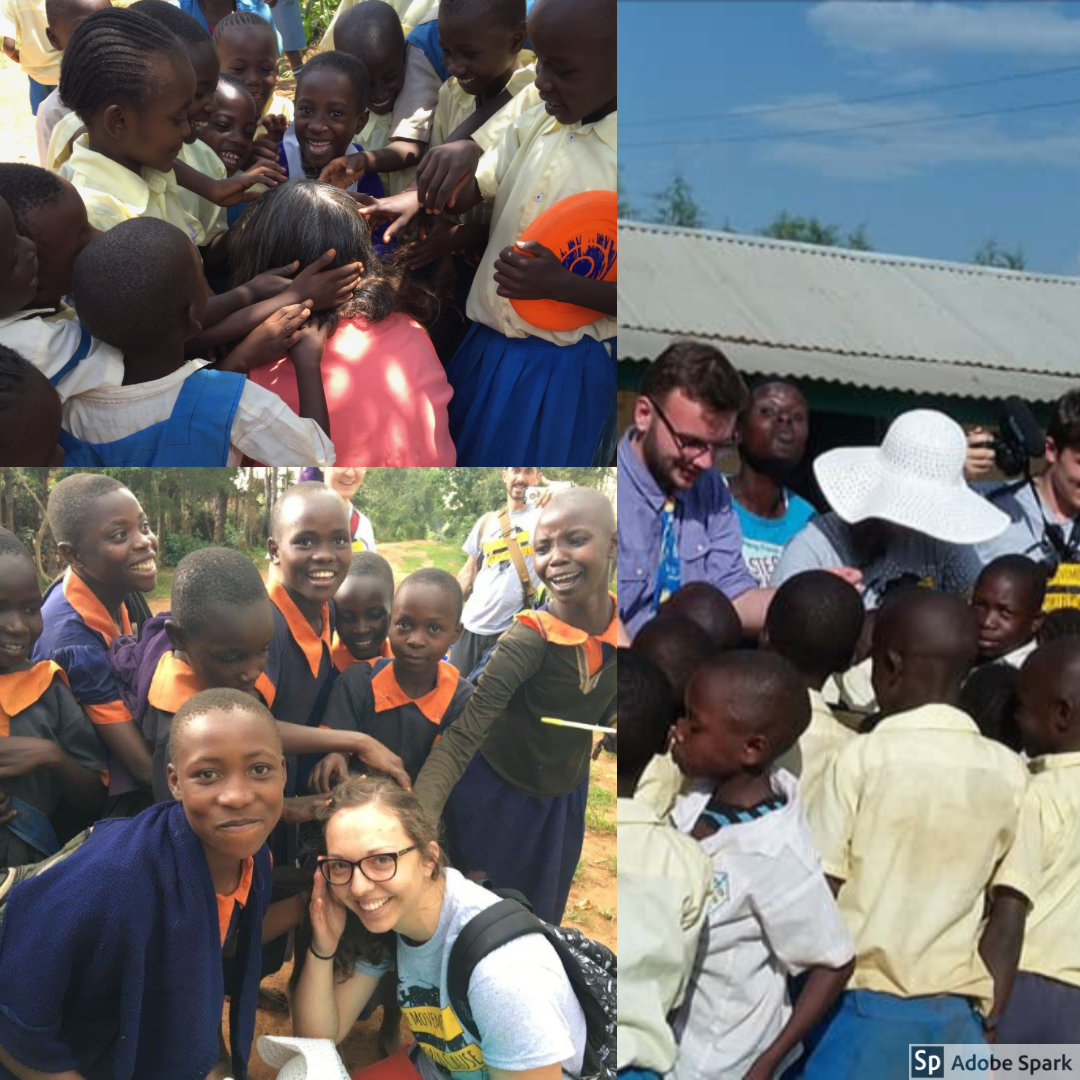
The students who had not had a change to touch Natalie, Brooke, and Melissa's hair wanted to be sure they had the chance to do so. Word got out pretty quickly and the students at the school across the street ran over yellow, "Let down your hair!" because they also wanted to feel the hair.

Ben and Livingstone taking one of their many selfies during the trip.
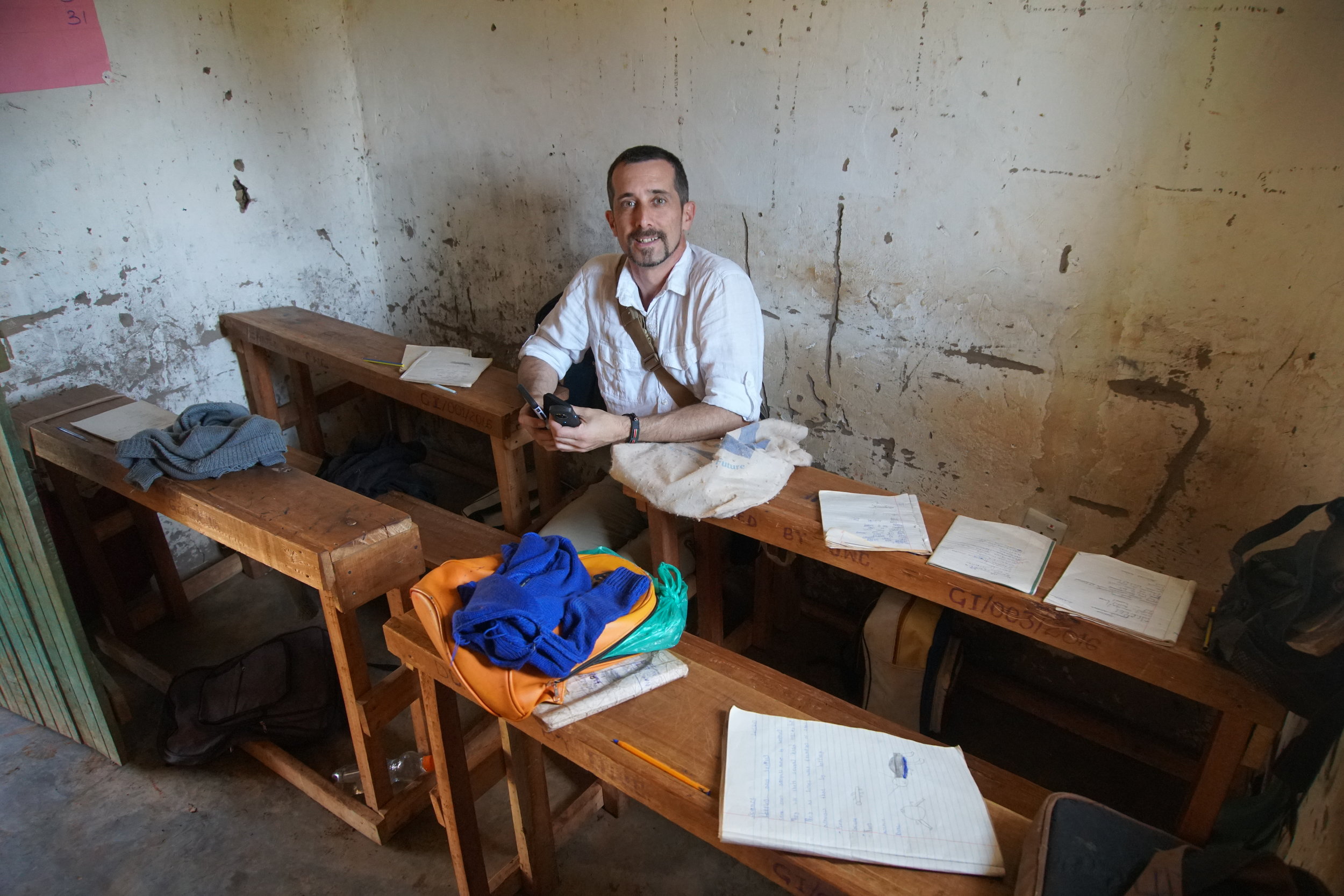
John sits between two tables to show how narrow the isle was for students to walk around. This picture truly does a wonderful job of showing us how small some of the classes were. Right in front of one of the tables, you cam see the open door to the classroom. If the door opened, it would block off student view of the board.
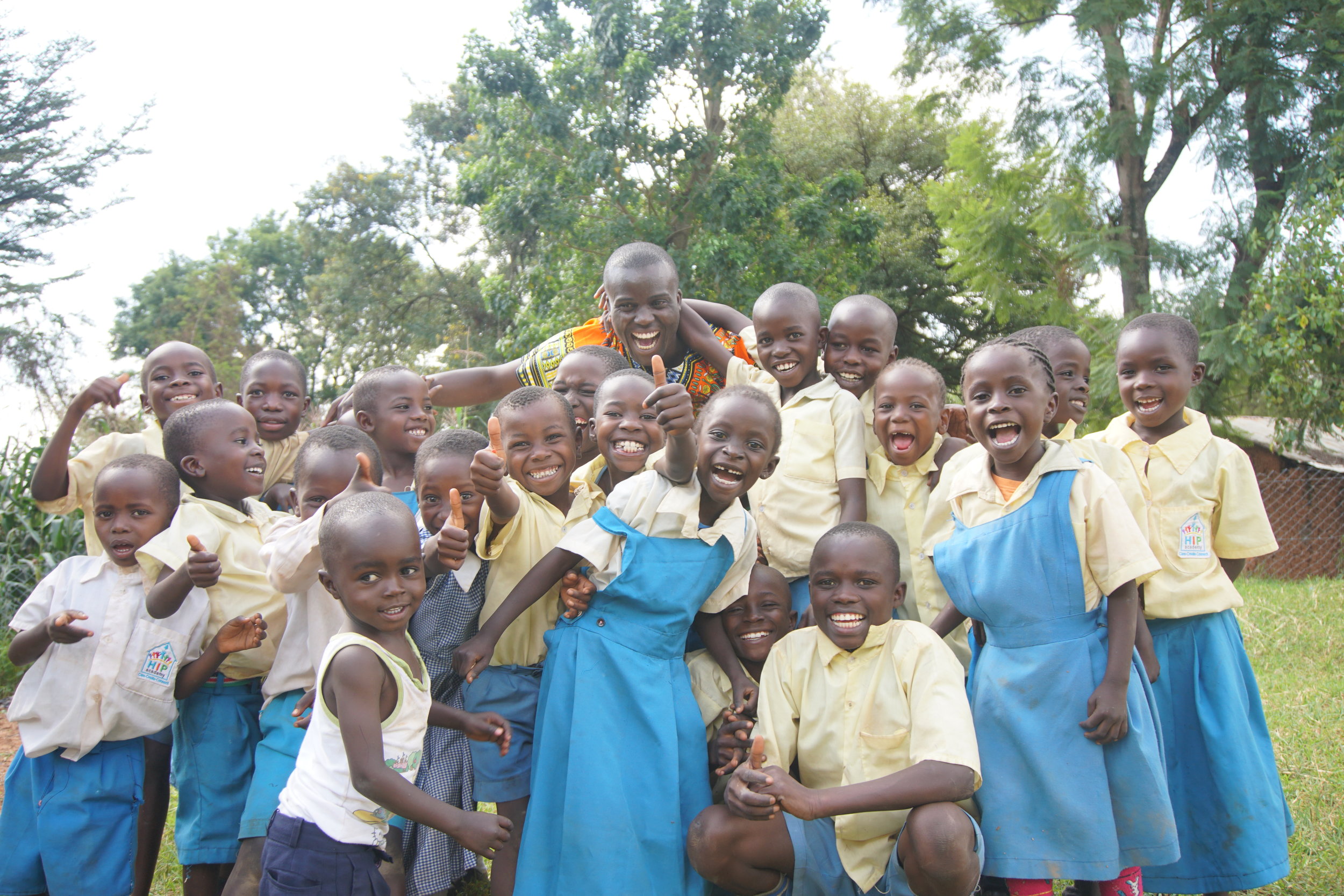
Livingstone posing with some of his students.
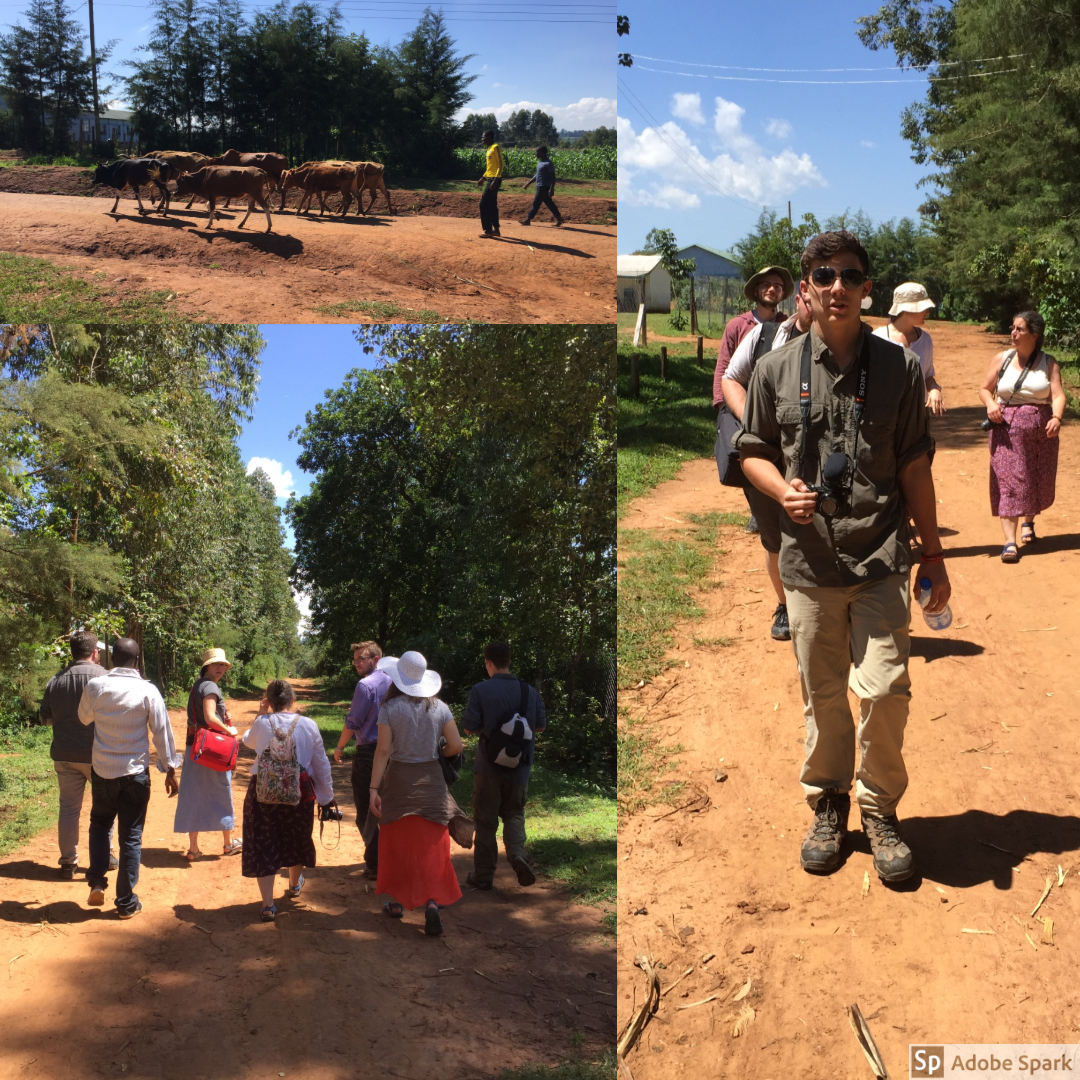
Again with our walk home. The walk was fairly short, but it provided some much needed time to regroup. Occasionally, we would run into something exciting along the road such as cattle.
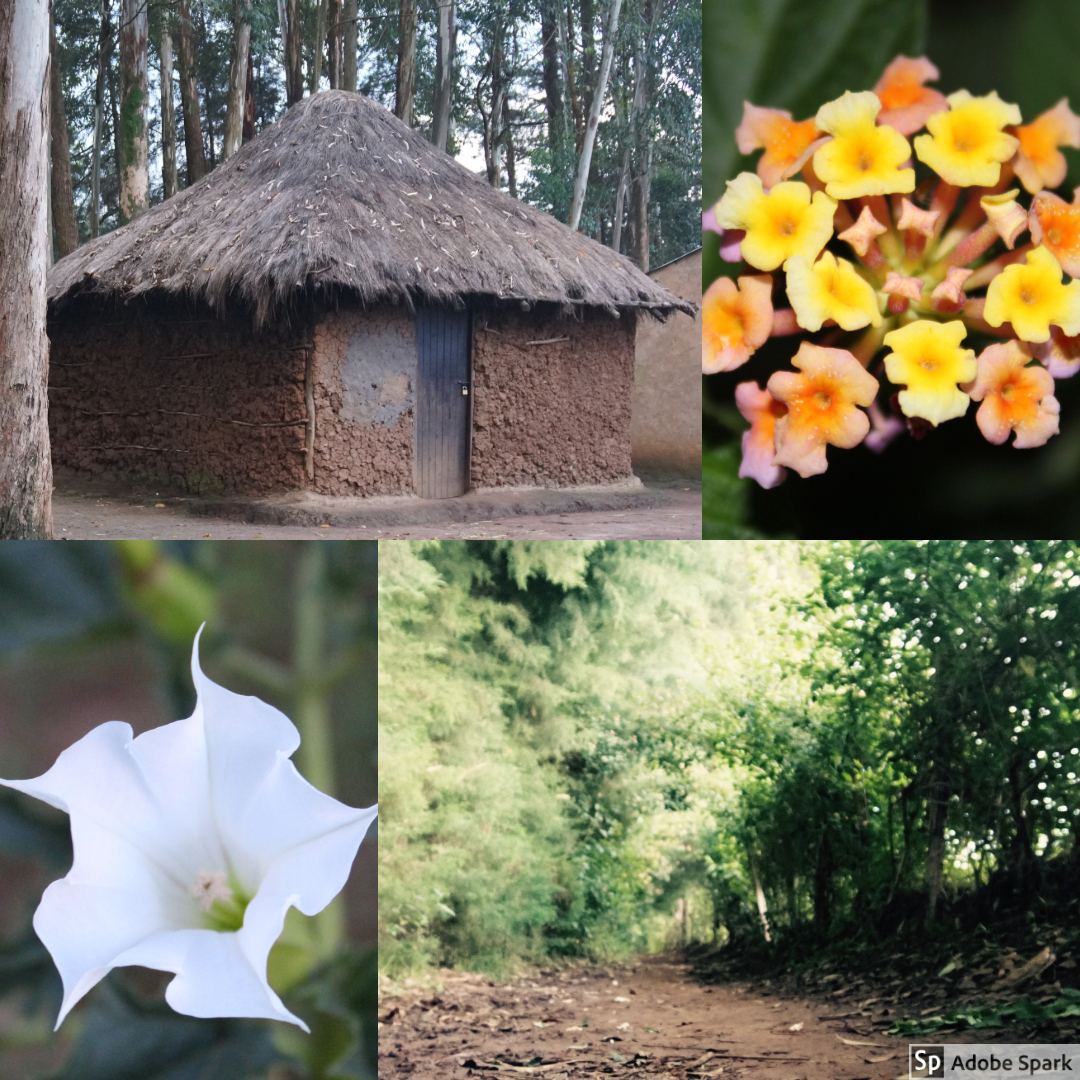
This day, Bapa brought us again on a little walk. Here, we were able to catch pictures of some of the beautiful wild flowers, the trees, and some of the houses members of the community lived in.

Saturday morning, we went to Mt. Elgon. Before leaving for the trip, the OWC team made sure to pack appropriate clothing for the storms that were predicted to hit.

Melissa getting some last minute hugs from Livingstone's niece before we head to Mt. Elgon.

At the entrance of the park, there were many signs giving us the history, the layout, as well as rules for the park.

While at Mt. Elgon, we got to say much of the national park's wildlife. The top picture are waterbuck, and the bottom two are antelope and zebra. The dirt in Kenya was often red, so when the zebra would roll in the dirt, their white stripes would turn colors.

The team traveled in a Land Cruiser for the trip. The back was rigged with two rows of seats, each facing a different direction. Our drivers were also armed guards.

Natalie giving John the thumbs up as she snacks on food we had gotten in Kitale before arriving at Mt. Elgon.

Our first expedition was to the Kitum Cave. We got out of the Land Cruiser and began our hike.

Leading the group was one of the armed guard. The guards were there both to protect the animals as well as us. The further along the trail we got, the denser the foliage became.

Behind us was another group of tourists exploring Kitum Cave.

Kitum Cave: "A volcanic lava tube about 15 million years old that goes as deep as 160 Meters inside. Archaeological remains suggest use by the indigenous Sabot community in the past as shelter and as hideout from raiders. This was a cultural and religious site where circumcision and prayer were conducted. Salt from the Gave was used for cooking and licking by livestock. Rock forming the magnificent cave and its richness in salt makes it frequented by elephants and other large and medium sized mammals as a salt licking site. It is also a roosting place for cave bats and nesting site for various species of birds. This is a must visit site for our tourists. Welcome"

Our tour guide was an expert. He would take time to explain to us in detail the history of the locations we visited as well as how different formations came to be.

Hunter trying to capture a picture of the hanging moss at the entrance of the cave.

The inside of the cave was very large. Once a year, elephants during a migration will come to the cave to lick the salt off the walls. There were many enclaves as well as a pond

As we entered further into the cave, we ran across a group of school children on a field trip. We also found the skull of a young elephant who did not survive the migration.

Although elephants do live in the cave once a year, one of the more permanent residents of the cave is bats. The bats would cluster on the roof of the cave together and fly around. There were also large deposits of guano.

After Kitum Cave, we continued our hike. In the trees were baboons and a variety of birds. Along the ground were a large amount of different types of plants, including Natalie's favorite, stinging nettles.

More pictures from the hike at Mt. Elgon. You can see the storm starting to roll in.

Livingstone found a boulder in front of Mackingeny Cave. He was the first to climb up to get a picture.

After Livingstone, our two drivers from the van also wanted to take pictures. Ben encouraged Natalie to climb the boulder as well. After help, Natalie finally climbed and Ben popped the question! This was the first "American" proposal for the Kenyans on the trip.

At the entrance of Mackingeny Cave is a waterfall. Water was falling during the proposal. Connor, Ben, and Natalie all had an emotional hug after once inside the cave.

The insects at Mt. Elgon were large. We found a beautiful butterfly the size of a hand and a friendly grasshopper. Not only were the insects large, but the trees were the largest any of us on the OWC team had seen.

This was our favorite overlook at Mt. Elgon. Livingstone is posed with the Kenyan countryside in the background. If you look closely, you can see fields and houses.

We were thrilled that our drivers tagged along with us for the safari at Elgon. Charles (pictured right), dropped the quote of the entire trip during the safari. While we were in the Kitum cave, hundreds of students from Kitale were very surprised to see Mzungus (white people) as we passed. One of us mused that "Mzungus (white people) in a dark cave? Not a good combination" and Charles responded by saying, "but brother, our shadows are all the same."

On the top of the world (at about 12,000 feet)

We got close, but not too close

The OWC team brought along soccer balls for the children in the community. We proposed a trade to the kids -- trade a ball for a ball. The balls that had been used were made from plastic bags and ropes.

A night under the stars--The OWC team brought along with them a telescope to stargaze. All members of the community were welcome to join.

Unfortunately, weather doesn't go as planned during monsoon season. Fortunately, John was quick thinking and used an app that showed constellations when the cloud was covering the stars.

Melissa and John planning out the day over breakfast and morning chai.

Church on Sunday was a religious experience.


We all shared heartfelt and long goodbyes and exchanged gifts with Livingstone Kegode's family on the final day. It was a very emotional night for everybody.

While many students walked to and from school, some students were picked up by moto.

Posing for the camera.

On Monday we distributed Sawyer PointOne bucket water filters to the parents at HIPAfrica. Many mothers from HIP have to draw water from a river for their families. After Connor and Fredrick's (HIP's administrator) presentation on the clean water filters - seeing the joyful reactions from the parents was an indescribable experience.

After the water demonstration, members of the community posed for a picture with Connor.

Every family of the students at HIP received a water filter.

The ladies wanted to pose with Natalie and Melissa.

Two students posing in front of the Kenyan flag.

Before leaving, the OWC team had a meeting with the members of the community to talk about progress that had been made during the week as well as future goals.

During one school day, Melissa insisted that we eat the same food as the children. On the bottom left is Githeri which was a mixture of corn and beans. To the top left was an avocado (not a typical part of the children's lunch), and to the right was milk.

Melissa showing students what their pictures looked like.

By the end of the week, the OWC team reached celebrity status with the students from the school.

During our final dinner with the Kegode family, Livingstone's niece insisted on siting on Melissa's lap.

Can we take another moment to once again commend mama and Esther on their cooking? Honestly, we were so incredibly well fed.

Each of us had flashlights to find our way around the chambre if we needed to go out at night.

After one of the monsoon rains, Melissa went for a walk. She wanted to retrace the steps that students sometimes take to school, including going back over the metal bridge after the rain. One of the roads in the village had a river running through the middle of it after the rains passed.

Learning can be fun!

Before leaving, we wanted to make sure that the items we brought to Kenya were going to be used well. We made sure to train teachers and community members on the water filters and iPads.

Open World was thrilled to have the opportunity to lead a voluntary professional development on foreign language acquisition, formative assessment, and iPad use in the classroom with all of the teachers of HIPAfrica. The eagerness and drive of the teachers has us so excited for the future.

Melissa lays out the trash balls after her trade with the children of the community.

Turns out that children like bubbles. The team had a blast blowing bubbles and watching the kids play with them.

Bapa showing Melissa, John, Connor, and Ben the land contract for where HIP is located.

A major concern expressed to us by the parents and staff of HIP was the cost of the school lunch program with the rising costs of corn in Kenya. Near the end of the trip, "Bapa", proposed to donate part of his land to supply corn for HIP's school lunch program. We want to thank Bapa for making this incredible decision. He's in the process of getting the land transferred now!

A shot from the last day... it was very difficult to say goodbye.

Chickens and chicks would often walk into classrooms and homes, and Natalie was always excited when this went down.

The students excited to use their new pencils.

This picture says so many words. Each pair of shoes (or lack thereof) tells a story--where the students have been and where they have yet to go.

In our last days at HIP, Professor Melissa Collum and nurse Brooke taught proper handwashing techniques and provided a sanitation bucket for the school. Watching the students build these habits in person was an experience we were amazed to see.

Many wild dogs lived in the community. While they generally ran away from the men (they would be chased out of the fields), they loved the women because the women would give them kitchen scraps after being done cooking.

We had students draw pictures. This was a picture that a student drew of her house and the path to the school.

After teaching the children good hygiene practices, naturally we had to also give them candy.

Not only did Brooke examine the children at the school, she also went into the homes of members in the community.

During her home expeditions, one of the homes was housing baby bunnies.

We traded pencils with the students. Many students had used the pencils down to the very nub and we loved being able to trade with them.

The students and teachers explored Colorado Springs from their iPads with a 360 field trip.

On a walk, we walked by other houses in the community.

The students of HIP after school hours taking a well deserved break.

Despite the medical exams initially being scary, the children of HIP took a liking to Brooke.

Natalie and Ben had a blast leading professional development on the iPads and formative assessments.

On our final day at HIP, the director of the district's Ministry of Education visited HIPAfrica after Fredrick Manzugu organized a meeting with us. The director met with Principal Brendah Katenya and the Open World Cause. The director was thrilled to know of our partnership with HIP and outlined the necessary steps needed for HIP to reach the standards outline by the Kenyan government.

Ben taught a lesson on how the earth revolves around the sun by using the flashlight on his phone and a globe.

The teachers enjoyed their new flashcards while the students enjoyed using markers on their "whiteboards" made of paper and sheet protectors.

We loved this picture because it shows how much work goes into creating the houses in the Kimilili community. First, a wooden frame must be constructed, and then it must be packed with a mixture of mud and hay.

Our final night at HIP, we set up a slideshow for the kids with pictures that we took during our stay and used a portable projector to display the pictures.

Sheldon amazed us with his beautiful rendition of a cat after listening to Natalie talk about her cats all week.

Bapa asked that each member of the OWC team plant 2 trees on the grounds of the school as a way to remember the work that we were able to accomplish during the week.

Naturally we needed pictures with the staff of the school. One teacher suggested that we "make a zebra" for the picture.

GROUP HUG FROM THE KIDS AND TEACHERS!!!

Bapa brought us on one final field trip. There we met other members of his family. Connor also made a close friend his final day. That student did not want to leave his side.

During our Kenyan goodbyes, we exchanged gifts with the Kegode family.

Members of the community gathered on the schools soccer pitch to play a game at sunset.

Nairobi traffic.

We were pretty exhausted from all the travel. Natalie fell asleep in Ben's lap and our van driver did a wonderful job taking care of us.

Cattle on the side of the road on the way to Nairobi.

We stopped for lunch and had wonderful plates of food!

Esther, Livingstone's sister, came with us to Nairobi. There, Brooke and Melissa accompanied her while she got her hair done.

Security at the airports is a really big deal. On our way to the airport, we had to get out of our van while the van got searched. Once we got to the airport, we had to go through security, and then all our bags were sniffed by dogs.

Nairobi was incredible. We went to a maasai market, a sauna, and walked the streets.

One of the incredible things about HIP is its ability to connect with classrooms around the world. Students from several different continents and partners of HIP were able to connect directly with HIP's students.

One of the incredible things about HIP is its ability to connect with classrooms around the world. Students from several different continents and partners of HIP were able to connect directly with HIP's students.

One of the incredible things about HIP is its ability to connect with classrooms around the world. Students from several different continents and partners of HIP were able to connect directly with HIP's students.

After the OWC team left HIP, funds were raised thanks to the hard work of classrooms around the world for a new latrine. The latrine is even fitted with a hand washing station!

Another things students loved doing during their time at recess was hooking their arms around each other and walking in sync, one leg at a time.

HIP's new buildings. After the successful completion of the latrine, the next task was building a new building for the school to meet Kenyan code. We are proud and happy to say that construction was complete on their beautiful new buildings! Again, whats amazing is how integral students across the world were in the completion of this structure.

After OWC's initial trip to Kenya, Professor Jeremy Gulle and Professor Beth Gulley and their students/children continued going to HIP to continue OWC's work at the school.

The Gulley's were able to bring HIP's students to Mt. Elgon. For many of the students, this was their first time leaving Kimilili.





















































































































































































